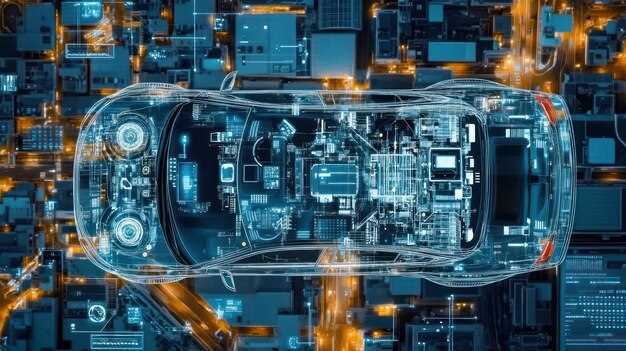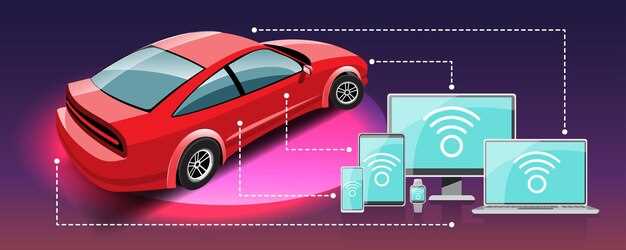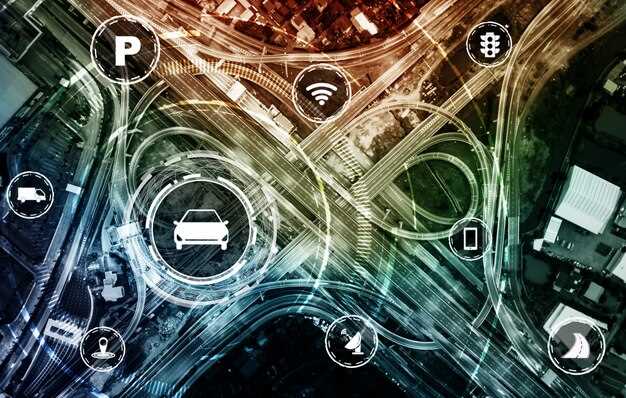
The automotive industry is undergoing a transformation with the emergence of connected vehicles. These advanced cars are equipped with cutting-edge technologies that allow them to communicate with each other and external systems, paving the way for improved safety, efficiency, and convenience. In this new era of transportation, real-time diagnostics play a crucial role in enhancing the driving experience and maximizing vehicle performance.
Connected cars are not just about entertainment or navigation; they are a vital component of the smart transportation ecosystem. By harnessing data analytics and Internet of Things (IoT) technologies, these vehicles can provide valuable insights into their mechanical health. This shifts the traditional paradigm of car maintenance from reactive to proactive, helping drivers to address potential issues before they escalate into costly repairs.
With the integration of real-time diagnostics, car owners can receive instant updates about their vehicle’s condition, including alerts for necessary maintenance or warnings of impending failures. This capability not only enhances the lifespan of the vehicle but also contributes to safer roads as any dangerous malfunctions can be detected and managed promptly. As we embrace this innovative landscape, the synergy between connected vehicles and real-time diagnostics is set to redefine personal and shared mobility, making our journeys more seamless and secure.
How Real-Time Diagnostics Enhance Vehicle Performance and Safety
Real-time diagnostics play a crucial role in the operation of connected cars, providing invaluable insights into vehicle performance and safety. By continuously monitoring various systems within the car, these advanced diagnostic tools allow for immediate detection of issues that might otherwise go unnoticed until they become critical.
Connected vehicles are equipped with a network of sensors that relay data to onboard computers. This data is analyzed in real time to assess the health of critical components such as the engine, brakes, and transmission. When a potential problem is identified, the diagnostics system can alert the driver, enabling timely intervention that prevents further damage and optimizes vehicle performance.
In addition to real-time alerts, diagnostic systems can facilitate preventive maintenance by analyzing performance trends over time. By collecting and processing data, these systems can predict when certain parts may require servicing or replacement, thus minimizing unexpected breakdowns and extending the lifespan of the vehicle.
Safety is another significant benefit of real-time diagnostics. With the capability to monitor tire pressure, fluid levels, and braking response, connected cars can notify drivers of any anomalies that might compromise safety. This proactive approach allows drivers to address issues before they lead to accidents, thereby enhancing overall road safety.
Moreover, real-time diagnostics can communicate directly with service centers. This connectivity allows mechanics to access the vehicle’s diagnostic data remotely, preparing them for any repairs needed before the car even reaches the shop. Consequently, this streamlines the repair process and ensures that issues are addressed swiftly and effectively.
In conclusion, real-time diagnostics are revolutionizing the way connected cars operate, enhancing both vehicle performance and safety. By providing immediate feedback and predictive insights, these systems empower drivers to make informed decisions that ultimately lead to a safer and more efficient driving experience.
Integrating Telematics: Key Technologies Behind Connected Vehicles

Telematics refers to the integration of telecommunications and monitoring systems that enable connected cars to communicate data in real time. Fundamental to this technology are several key components that facilitate diagnostics, enhance vehicle performance, and improve driver safety.
One of the primary technologies in telematics is the Global Positioning System (GPS), which allows vehicles to determine their location accurately. This information is critical not only for navigation but also for fleet management and real-time diagnostics. By tracking the vehicle’s location, diagnostic data can be collected and analyzed, aiding in predictive maintenance and minimizing downtime.
Another essential technology is On-Board Diagnostics (OBD), which enables vehicles to self-monitor their performance. OBD systems gather data from various sensors throughout the car, tracking factors like engine efficiency and emissions. This data is relayed to the cloud, where it can be analyzed to detect issues proactively, reducing the risk of major malfunctions.
Wireless communication technologies, such as 4G LTE and 5G, play a crucial role in connecting cars to the internet. With high-speed connectivity, data transfer becomes seamless, allowing real-time diagnostics to be performed. This capability ensures that drivers are immediately informed of any issues, enhancing safety and promptness in addressing potential problems.
Cloud computing is another vital component in the realm of connected vehicles. By storing vast amounts of data off-site, cloud solutions enable advanced analytics and machine learning algorithms to provide insights into vehicle health. This integration allows automotive manufacturers and service providers to offer personalized maintenance recommendations based on driving habits and historical data.
Finally, the integration of Internet of Things (IoT) devices enhances the telematics ecosystem. These interconnected devices, found in vehicles and infrastructure, work together to share information, further improving diagnostics and overall vehicle performance. For instance, linked traffic signals can communicate with cars to provide optimal route information, thereby improving efficiency and reducing the likelihood of vehicle strain.
In summary, the integration of telematics in connected cars relies on a combination of GPS, OBD systems, wireless communication, cloud computing, and IoT technologies. Together, they create an advanced network that not only enhances real-time diagnostics but also transforms the driving experience, promoting safety and efficiency.
Adapting Maintenance Strategies with Data-Driven Insights from Connected Cars

The integration of connected vehicles into the automotive landscape has revolutionized how manufacturers and service providers approach maintenance strategies. These vehicles continuously collect and transmit data, offering real-time insights that significantly enhance the efficiency of maintenance operations.
Analyzing data from connected cars enables manufacturers to identify patterns and trends that were previously difficult to detect. For example, by monitoring vehicle performance metrics such as engine temperature, fuel efficiency, and braking behavior, technicians can pinpoint potential issues before they escalate into major problems. This predictive maintenance approach minimizes downtime and reduces the overall costs associated with vehicle repairs.
Moreover, the wealth of information gathered from connected vehicles aids in the customization of maintenance schedules. Instead of relying on traditional time-based intervals, service providers can create personalized maintenance plans based on individual driving habits and vehicle conditions. This data-driven strategy not only enhances vehicle longevity but also improves customer satisfaction as owners receive timely relevant services tailored to their needs.
Connected vehicles also facilitate more effective communication between drivers and service centers. Automated alerts can notify drivers of required maintenance tasks, while diagnostic data can be shared with technicians ahead of scheduled appointments. This seamless exchange of information minimizes unnecessary visits and streamlines the repair process, contributing to enhanced operational efficiency.
As the automotive industry continues to embrace connected technologies, the ability to adapt maintenance strategies using data-driven insights will be paramount. By leveraging the information provided by connected cars, vehicle manufacturers and service providers can not only improve their operational frameworks but also drive innovation in customer care and vehicle reliability.





